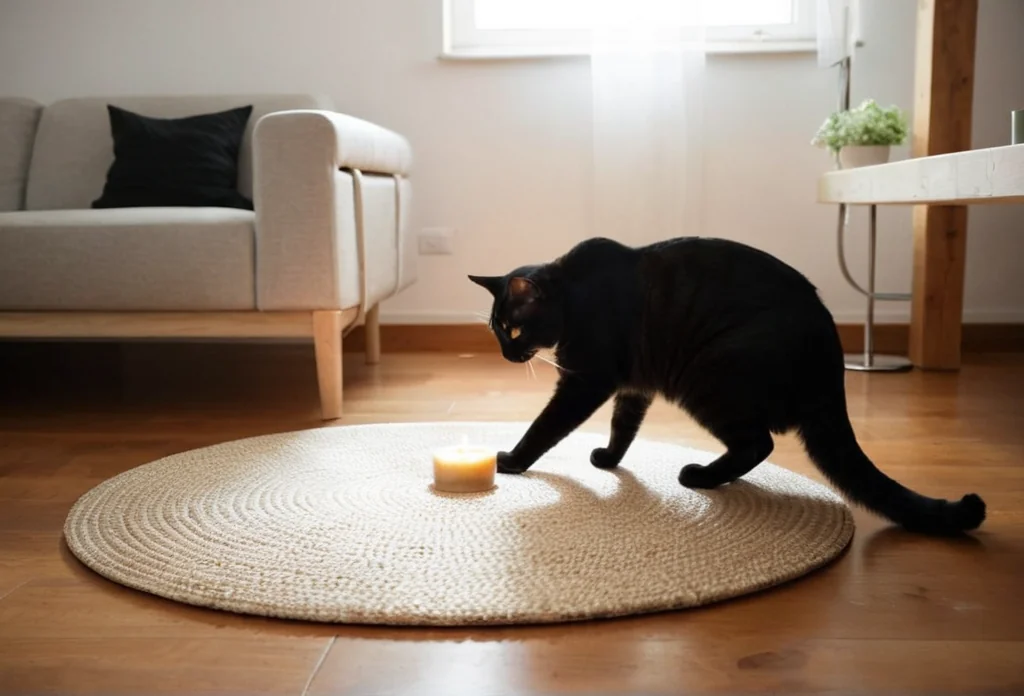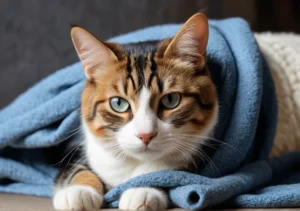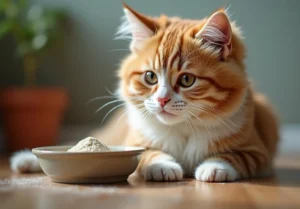Cats are curious creatures with a few quirky habits. One of those peculiarities is their tendency to circle before indulging in a meal.
This behavior is often linked to their instinctual nature. In the wild, circling helps animals flatten grass, find a comfortable spot, and check for potential threats before they eat. But there’s a lot more beneath the surface of this circling ritual that reveals just how fascinating feline behaviors can be, and you might be surprised to learn about its additional meanings.

What instincts drive this behavior
Cats are fascinating creatures, and their behaviors often trace back to strong primal instincts. One of the key instincts behind circling before they eat is territory marking. By pacing around their food, they may be signaling to other animals that this is their turf, reinforcing their ownership of the space. This instinct stems from centuries of evolution, where food and safety were closely linked to territory.
Additionally, circling allows cats to assess their surroundings before dining. In nature, cats are both predator and prey, so ensuring the area is safe helps them feel more secure while they eat. The behavior can also mimic their wild ancestors, who would circle before settling down to ensure they weren’t in danger. This action allows them to check for predators or hidden threats, contributing to their overall sense of safety.
In essence, circling isn’t simply an odd quirk; it’s rooted in deeply instilled survival behaviors. Observing your cat’s circling can offer a glimpse into its instinctual need for security and identity in its environment, keeping in mind that this behavior may vary from cat to cat.
Do all cats circle before eating
Not all cats engage in circling before their meals, but many do, primarily due to their instinctual behavior. While it’s common, some breeds seem to exhibit this much more noticeably than others. The Siamese, for example, may demonstrate circling more frequently as they tend to communicate their needs more openly.
Other breeds, like the Maine Coon, might display this behavior less often. It’s also worth noting that individual personalities greatly influence this habit. Some cats might feel more comfortable and secure, while others might be more cautious, leading to more or less circling.
Here’s a quick overview of which cats might corner more prominently: – Siamese: Often more vocal and active; circling is a part of their routine. – Persians: Less active, might engage in circling less frequently. – Bengals: High energy can lead them to circle energetically; it’s a part of their playful nature. – Maine Coons: Generally relaxed, so circling might be less noticeable.
Remember, your cat’s unique personality and experiences can shape how it approaches mealtime, so if your furry friend prefers to skip the circling, that’s perfectly fine too. For additional insights into feline behavior, you can check out resources from the American Society for the Prevention of Cruelty to Animals (ASPCA) here.
Is circling a sign of anxiety
Cats are creatures of habit, and their behavior speaks volumes about their emotional state. If your feline friend is circling before mealtime, it could signal some underlying anxiety. For nervous cats, this circling might serve as a self-soothing ritual, helping them cope with the tension they feel around feeding time.
Stress can stem from various sources, including changes in their environment, new pets, or loud noises. When a cat circles, they might be trying to establish a sense of control over their space. This behavior allows them to feel more secure before they finally dig in.
Watch for other signs of stress, like hiding, excessive grooming, or inappropriate elimination. If your cat’s circling seems excessive and is accompanied by these symptoms, it might be worth discussing with your vet. Sometimes, even just changing their feeding area can help reduce anxiety significantly.
How does circling relate to territoriality
Cats are territorial animals, and their circling behavior can be rooted in their instincts. By circling before eating, they’re reinforcing their claim over the area, ensuring that it’s safe and theirs. This is especially true in multi-pet households. By circling, your cat might be signaling to others that this spot belongs to them before they chow down.
There are a few notable aspects to this territory-related behavior:
- Marking territory: Cats have scent glands in their paws. By circling, they may be leaving their scent, marking the area as their own.
- Checking for threats: Circling can be a way for a cat to scan the area. They’re ensuring there aren’t any unexpected invaders (like another pet) nearby.
- Establishing dominance: When feeding time rolls around, circling might also display a sense of rank or dominance. In social situations, cats might need to assert themselves to secure their meal.
If your kitty’s circling is paired with stiff posture or growling, this behavior could be a sign that they feel threatened. Providing separate feeding areas for each pet can reduce competition and help maintain a peaceful eating environment.
For more insights into feline behavioral patterns, you might want to explore The Cat Behavior Answer Book, which dives deeper into various cat behaviors and how to address them effectively.
Can circling indicate health issues
Cats circling before eating can sometimes hint at underlying health concerns. While this behavior often stems from instinctual habits, it’s essential to be aware of possible medical issues. For instance, cats with digestive problems may circle as a way to signal discomfort or anxiety around food. Conditions like pancreatitis or bowel inflammation can affect their eating behavior. Additionally, neurological issues could cause disorientation, resulting in circling prior to meals.
Stay alert for other signs that might accompany the circling, such as changes in appetite, lethargy, or unusual vocalizations. If your cat seems to be circling excessively or displays any troubling behaviors, it’s wise to schedule a vet appointment. Regular check-ups will help rule out any serious health problems and keep your furry friend on the right track.
What role does ritual play in a cat’s life
Circling before meals is an intriguing ritual that many cats adopt. This behavior ties into their innate need for routine and familiarity. Cats are creatures of habit, often finding comfort in predictable actions. The act of circling might mimic their instinctual behavior in the wild, where cats would develop a small “nest” before settling down to eat.
Rituals provide them with a sense of security and predictability, which is key to a cat’s mental well-being. Here’s a quick look at some other common habits that reflect their love for routine:
- Meal Time Rituals: Many cats have specific ways they prefer their meals presented, whether it’s the placement of their bowl or the sound of their food being poured.
- Grooming Routines: Cats often groom themselves at specific times during the day, contributing to their self-soothing behaviors.
- Playtime Patterns: They may become active at certain times, often replicating behaviors they learned as kittens.
These rituals are more than just quirks; they help your cat feel grounded in their environment. Providing a consistent mealtime and accommodating their circling behavior can enhance their overall happiness and comfort during feeding time.
For a deeper dive into your cat’s behavior, check out resources from the American Association of Feline Practitioners here.
Recognizing these patterns and engaging with positive reinforcement can help foster a stronger bond and ensure your furry companion feels secure in their daily routine.
Are there environmental factors that influence circling
A cat’s environment plays a notable role in how they express their behaviors, including the habit of circling before a meal. Cats are naturally territorial and sensitive creatures, so certain conditions can trigger this instinct. For example, if there are other pets sharing the space, your cat might circle around to assess their surroundings and assert their claim.
Additionally, the location of the food bowl can influence this behavior. A bowl placed in a high-traffic area may make your cat hesitant, prompting extra circling to survey for potential threats or distractions. Other factors, like the cleanliness of the area or even the scent of other animals, can impact their food habits.
Here are some specific environmental factors that could affect your cat’s circling behavior:
- Multiple pets: Competition for food can lead to increased circling.
- New surroundings: Moving or changing the feeding area can make your cat cautious.
- Noise and disturbances: Loud sounds can trigger a cat to circle more, as they remain alert.
- Food bowl placement: A strategic location helps your cat feel safe while eating.
Creating a calm, familiar environment could ease the circling habit—try placing the food bowl in a less busy area to help your furry friend feel secure before diving into their meal.
Is circling common in wild cats
Circling isn’t just a quirk of domestic cats; it’s a behavior seen among wild cats too. In the wild, circling serves several purposes, primarily tied to territoriality and food safety. Before they settle down to eat, wild felines—as instinctual hunters—will often circle to check for potential threats in their surroundings. This careful approach helps them stay alert to danger, ensuring they can eat safely.
The comparison to domestic cats highlights an interesting aspect of their behavior. Despite having fewer threats at home, many domestic cats retain this instinct, circling as if performing a safety check in their own living room.
It’s worth noting that when wild cats prepare to eat, they may also circle to flatten grass or brush, creating a comfortable spot. Domestic cats might mimic this by kneading or circling food before eating, as if they’re preparing the environment.
For a deeper dive into cat behavior—both wild and domestic—check out this resource from the American Animal Hospital Association: AAHA Cat Behavior Facts.
Fun facts about cat behavior
Cats are quirky creatures, and understanding their habits can be both fascinating and enlightening. Circling before eating is one such habit that might raise a few eyebrows, but it has deeper roots in feline behavior.
One intriguing fact is that this behavior is rooted in instinctual actions. In the wild, cats would circle their prey before pouncing, both to assess their surroundings and to establish a sense of control. Even domesticated cats retain this ancestral behavior, which can also serve to mark territory with their scent glands located in their paws.
Additionally, circling might be a way for cats to find the perfect spot. They’re particular about their environment, so this dance before dining can help them settle in before they chow down.
Here are a few other interesting tidbits about cats and their circling behavior:
– Comfort mechanism: Circling can provide reassurance. By displaying this behavior, they can better gauge their safety and comfort level before eating.
– Mental engagement: Cats often thrive on routines and patterns. This circling helps stimulate their minds even before they eat.
– Health indicator: A sudden change in circling behavior might indicate health issues, so always pay attention to any shifts.
For more insights into cat behavior, check out the ASPCA for expert advice.
How can you manage or change this behavior
It’s natural for cats to circle before they eat, but if it becomes excessive or problematic, there are ways to address it. Firstly, observe the context. Are they circling because of excitement, anxiety, or something else? Understanding their motivations can help guide your next steps.
If it feels excessive, try these specific strategies:
1. Create a calm eating space: Ensure their eating area is quiet and stress-free. A cozy mat or a separate room can help.
2. Establish feeding routines: Setting a regular feeding schedule can reduce anxiety and give them a sense of predictability, possibly cutting down on circling.
3. Enrichment activities: Engaging your cat in play or puzzle feeders can channel their energy and reduce pre-meal antics.
4. Monitor their health: Keep an eye on their overall behavior, appetite, and health. If the circling seems out of character, consult your vet for potential health issues.
As a bonus tip: If you notice your cat’s circling becoming frantic, consider introducing calming products, like pheromone diffusers or sprays, which can create a more relaxed environment for mealtime.
Alex, a passionate animal lover, has experience in training and understanding animal behavior. As a proud pet parent to two dogs and three cats, he founded AnimalReport.net to share insights from animal experts and expand his knowledge of the animal kingdom.




